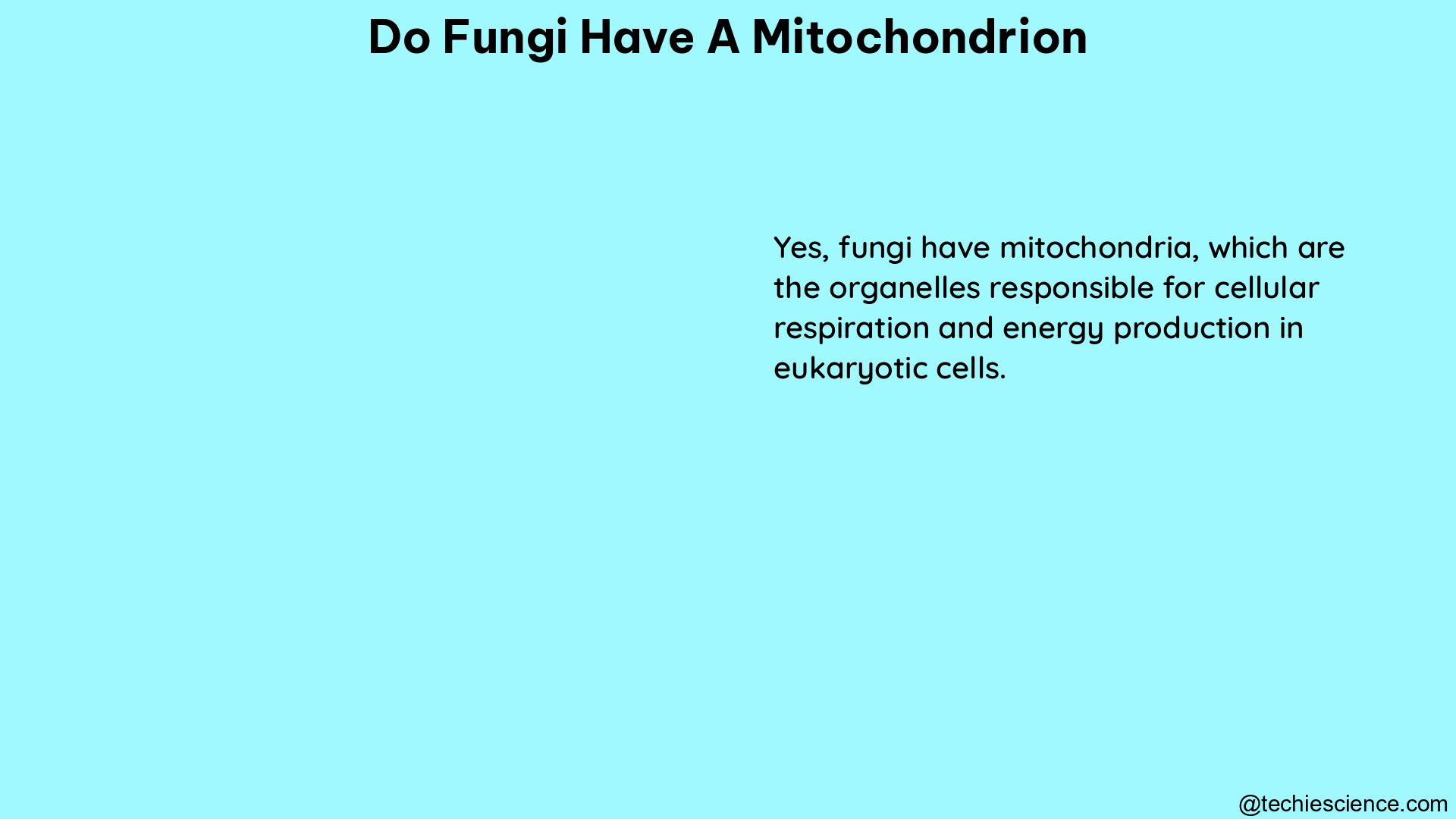Fungi, like most eukaryotic organisms, possess mitochondria – the powerhouses of the cell responsible for energy production through oxidative phosphorylation. Fungal mitochondria play a crucial role in various cellular processes, including energy metabolism, apoptosis, and signaling pathways. Understanding the structure, function, and diversity of fungal mitochondria is essential for unraveling the complex biology of these ubiquitous organisms.
The Importance of Fungal Mitochondria
Mitochondria are organelles found within the cells of fungi, as well as other eukaryotes, that serve as the primary site of cellular respiration. These organelles are responsible for the production of adenosine triphosphate (ATP), the primary energy currency of the cell, through the process of oxidative phosphorylation. In fungi, mitochondria are essential for generating the energy required for various cellular functions, such as growth, reproduction, and stress response.
Fungal Mitochondrial DNA (mtDNA)

Fungal mitochondrial DNA (mtDNA) has been extensively studied due to its small size, unique features, and potential applications in pathogen detection. Fungal mitogenomes, the complete mitochondrial genomes of fungi, exhibit a remarkable diversity in terms of size, structure, and gene content. The size of fungal mitogenomes can range from as small as 19 kilobases (kb) to over 200 kb, with the majority falling within the 20-100 kb range.
Structural Diversity of Fungal Mitogenomes
Fungal mitogenomes can exist in either linear or circular forms, with the latter being more common. The circular mitogenomes of fungi often contain a diverse array of genes, including those encoding subunits of the respiratory chain complexes, ribosomal RNAs, and transfer RNAs. Additionally, some fungal mitogenomes may harbor introns, which are non-coding DNA sequences that can be spliced out of the mature RNA transcripts.
Gene Content Variation
The gene content of fungal mitogenomes can also vary significantly. While most fungal mitogenomes contain the core set of genes involved in oxidative phosphorylation, such as those encoding subunits of the respiratory chain complexes, the presence and arrangement of other genes can differ among fungal species and lineages. Some fungal mitogenomes may also contain genes involved in DNA replication, repair, and recombination, as well as genes encoding proteins with unknown functions.
Mitochondrial Genome Loss in Fungi
Interestingly, the mitochondrial genome has been lost in some fungal lineages, such as those belonging to the Neocallimastigales order. These fungi, known as anaerobic chytrids, have adapted to thrive in low-oxygen environments and have evolved alternative energy-producing pathways that do not rely on the mitochondrial respiratory chain.
Challenges in Studying Fungal Mitogenomes
The study of fungal mitogenomes has benefited greatly from the advancements in next-generation sequencing (NGS) technologies. However, there are several challenges associated with the analysis of fungal mitogenomes that require careful consideration:
-
Sequence Length Limitations: Some fungal mitogenomes can be quite large, exceeding the read length capabilities of certain NGS platforms, making it difficult to assemble the complete mitogenome sequence.
-
Nuclear-encoded Mitochondrial Pseudogenes (NUMTs): During the analysis of fungal mitogenomes, there is a risk of amplifying nuclear-encoded mitochondrial pseudogenes (NUMTs), which can lead to the misidentification of mitochondrial genes and complicate the assembly process.
-
Heteroplasmy and Recombination: Fungal mitochondria can exhibit heteroplasmy, where multiple mitochondrial genome variants coexist within a single cell. Additionally, mitochondrial recombination can occur, further complicating the analysis of fungal mitogenomes.
To address these challenges, researchers must carefully select appropriate methods and bioinformatics tools for the analysis of fungal mitogenomes, taking into account the unique features and limitations of these genomes.
Mitochondrial Physiology and Apoptosis in Fungal Infections
In the context of fungal infections, several studies have investigated the changes in mitochondrial physiology and morphology that occur in the host’s immune cells. For instance, during fungal infection in the insect model Galleria mellonella, researchers have observed significant disturbances in the mitochondrial physiology and morphology of the insect’s hemocytes (immune cells), which accompany the process of apoptosis (programmed cell death).
These mitochondrial changes observed in insect immune cells during fungal infection are remarkably similar to the alterations seen in mammalian cells, suggesting a considerable evolutionary conservatism in the role of mitochondria in the activation of apoptosis. This evolutionary conservatism highlights the importance of mitochondria in the host’s immune response to fungal pathogens, as well as the potential for using insect models to study the complex interplay between mitochondrial function and the immune system during fungal infections.
Conclusion
In summary, fungi do possess mitochondria, which are essential organelles for energy production and various cellular functions. Fungal mitochondrial DNA (mtDNA) has been extensively studied due to its unique features and potential applications in pathogen detection. The diversity of fungal mitogenomes, in terms of size, structure, and gene content, reflects the evolutionary adaptations of these organisms. While the study of fungal mitogenomes has benefited from advancements in sequencing technologies, there are still challenges that require careful consideration. Furthermore, the role of mitochondria in the host’s immune response to fungal infections, as evidenced by the similarities in mitochondrial physiology and apoptosis between insect and mammalian cells, underscores the importance of understanding the complex interplay between mitochondrial function and the immune system.
References:
- Quizlet. (n.d.). Bio Test 3 Chap 29-33. Retrieved from https://quizlet.com/446064909/bio-test-3-chap-29-33-flash-cards/
- Sandor, S., Körber, N., Rühle, F., Meierhofer, D., & Mühleip, A. (2020). Mitochondrial Genome Diversity and Evolution in the Fungal Pathogen Candida auris. Genes, 11(7), 723. https://doi.org/10.3390/genes11070723
- Stępień, Ł., Błaszczyk, L., Banach, A., & Pietraszek, A. (2021). Mitochondrial Physiology and Morphology Changes in Galleria mellonella Hemocytes during Fungal Infection. Pathogens, 10(3), 299. https://doi.org/10.3390/pathogens10030299
I am Ankita Chattopadhyay from Kharagpur. I have completed my B. Tech in Biotechnology from Amity University Kolkata. I am a Subject Matter Expert in Biotechnology. I have been keen in writing articles and also interested in Literature with having my writing published in a Biotech website and a book respectively. Along with these, I am also a Hodophile, a Cinephile and a foodie.